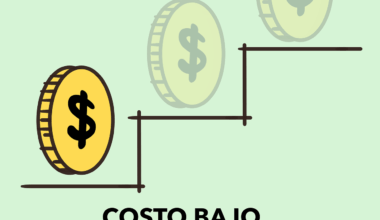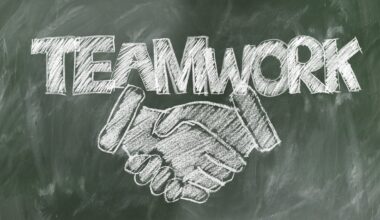Behavioral Economics: Challenging Traditional Microeconomic Assumptions
Behavioral economics uniquely intertwines psychology and economics, addressing how individuals often contradict conventional economic theories. Traditional microeconomics assumes rational actors making decisions based solely on available information and maximizing utility. However, behavioral economics reveals complexities in human behavior influenced by cognitive biases, emotions, and social factors. Key concepts include heuristics, which simplify decision-making processes under uncertainty. These mental shortcuts can lead to systematic deviations from optimal choices, showcasing how rationality is often compromised. For example, loss aversion explains why individuals prefer avoiding losses over acquiring equivalent gains. This perspective profoundly impacts market dynamics and consumer behavior, suggesting that external forces shape choices significantly. Behavioral economists analyze how contextual factors, such as framing effects or social norms, can influence preferences and risk-taking. As a result, understanding consumer behavior through these lenses not only challenges but enriches standard microeconomic approaches. It provides insights enabling better predictions of actual behaviors in markets. The interconnection of behavior, cognition, and economics encourages rethinking policy interventions designed to influence consumer choices and improve welfare outcomes effectively, illustrating the crucial role of psychology in economic theory.
The Key Principles of Behavioral Economics
Several foundational principles of behavioral economics challenge traditional assumptions about human decision-making processes. First, the concept of bounded rationality suggests that while individuals aspire to make rational choices, their cognitive limitations prevent them from achieving this ideal. Information overload and time constraints often lead individuals to rely on heuristics, which may be beneficial but can result in errors. Additionally, the endowment effect showcases how people assign higher value to items simply because they own them, deviating from standard utility-maximizing behavior. Moreover, priming effects demonstrate how exposure to certain stimuli can subconsciously influence choices and judgments. The importance of social preferences highlights an individual’s inclination to consider fairness and reciprocity, rejecting purely self-interested behavior. By acknowledging that human beings are not the perfectly rational agents traditional economics depicts, behavioral economics introduces more realistic models of human behavior. This evolution in understanding opens up new avenues for empirical research and practical application, from marketing strategies to public policy design. Utilizing insights from behavioral economics may foster holistic approaches in addressing complex economic issues, ensuring decisions align more closely with actual human behavior in various market contexts.
The implications of behavioral economics extend beyond academic theories into real-world applications. Businesses and policymakers increasingly embrace behavioral insights to influence choices and enhance consumer welfare. For instance, nudges, small changes in the environment, help steer individuals towards desirable decisions without restricting options. Applications in health, finance, and marketing demonstrate how behavioral strategies can be effectively leveraged. Health campaigns often utilize nudges to encourage healthier lifestyle choices, such as default options for organ donation or automatic enrollment in retirement savings plans. In finance, behavioral cues can promote better saving habits and responsible spending among consumers. Retailers harness behavioral insights to optimize pricing strategies, product placement, and promotional offers, thereby elevating customer engagement and satisfaction. Furthermore, governments apply behavioral economics to public policies, addressing pressing social issues such as poverty or education. Policies designed with behavioral considerations often yield better outcomes as they align with the nuances of human behavior. Consequently, incorporating behavioral economics into various sectors leads to innovative solutions tailored to meet the needs and preferences of individuals effectively, transforming the landscape of traditional economic practices into more impactful, results-driven approaches.
Challenges and Critiques of Behavioral Economics
Despite its growth and acceptance, behavioral economics faces challenges and critiques that merit consideration. One major critique concerns the replicability and robustness of findings derived from behavioral experiments. Issues arise when attempting to replicate results across different contexts and populations, raising questions about the generalizability of behavioral insights. Critics argue that behavioral theories often lack the rigorous predictive capacity that classical economics possesses, leading to concerns about their practical applications. Additionally, the focus on individual cognitive limitations can sometimes overlook broader structural factors affecting decision-making, such as institutional constraints or market dynamics. Debates continue regarding the ethical implications of employing nudges, especially when considering consumers’ autonomy and informed decision-making. As behavioral economics influences policy frameworks, there is an ongoing conversation about the balance between guidance and manipulation. Furthermore, some economists caution against overreliance on behavioral insights, advocating for maintaining a foundation in traditional economic principles. Ensuring that behavioral economics complements rather than supplants established economic theories is essential for developing a comprehensive understanding of human behavior within economic contexts.
The integration of behavioral economics into traditional microeconomic frameworks signifies a paradigm shift that promises numerous insights into consumer behavior. One transformative aspect is recognizing that emotional factors often play a critical role in decision-making processes. Traditional models of utility maximization rely heavily on the notion of rationality, while behavioral economics underscores that emotions frequently shape preferences and alter risk assessment. Understanding how feelings influence choices enhances businesses’ ability to connect with consumers meaningfully, ultimately driving brand loyalty. Furthermore, acknowledging the influence of social context allows economists to appreciate the broader environment in which decisions transpire. Social interactions, norms, and cultural values substantially impact individuals’ choices, explicitly challenging the assumption of isolated rational actors. This shift in perspective can lead to more effective marketing strategies and policies aligned with societal values and behaviors. Furthermore, customizing products and services based on insights from behavioral economics can create a more targeted approach that resonates with diverse consumer bases. By embracing these psychological dimensions, organizations can forge stronger connections with consumers, capitalizing on genuine insights to design better products and services that cater to real-world behaviors.
Future Directions in Behavioral Economics
Looking ahead, the field of behavioral economics stands poised for continued expansion and integration into mainstream economic theory. Researchers are increasingly focused on exploring the intersections of behavioral economics with areas such as neuroeconomics and evolutionary economics. By examining how biological and cognitive processes influence economic decisions, scholars can develop a deeper understanding of the interplay between emotions and rational choices. Additionally, advances in technology, particularly big data and machine learning, provide researchers with unprecedented opportunities to analyze consumer behaviors on a scale never seen before. This growing capacity to analyze vast data sets can yield valuable insights into the nuances of decision-making, enabling practitioners to customize interventions more effectively. Furthermore, as global challenges such as climate change and public health arise, behavioral economics will likely contribute significantly to devising innovative solutions that encourage positive societal behaviors. Policymakers and organizations can leverage behavioral insights to foster sustainable practices and healthy choices aligned with collective goals. Ultimately, the future of behavioral economics lies in its ability to evolve continually, adapting insights to new contexts while remaining grounded in empirical research and real-world applications.
In conclusion, behavioral economics provides a crucial lens for understanding and interpreting human behavior in economic contexts. By challenging traditional assumptions about rationality, behavioral economics enriches analyses of decision-making processes. The combination of psychological insights with economic principles enables a more comprehensive understanding of consumer behavior, influencing marketing and public policy approaches. Behavioral insights not only optimize strategies to engage consumers effectively but also address broader societal challenges. Engaging with the complexities of human motivations and behaviors can lead to innovative solutions that resonate with individuals. While criticisms persist regarding the methodological rigor and ethical implications of nudging, embracing these insights in conjunction with traditional economics can strengthen both disciplines. As awareness and application of behavioral economics expand, its potential to transform how we understand economic behavior increases significantly. Stakeholders from both academia and industry must collaborate to ensure that the evolving field addresses real-world needs while maintaining rigorous standards. Ultimately, the ongoing convergence of behavioral insights with economic theory can guide effective policies and practices, shaping a future where economic interactions align more closely with human motivations and realities.


